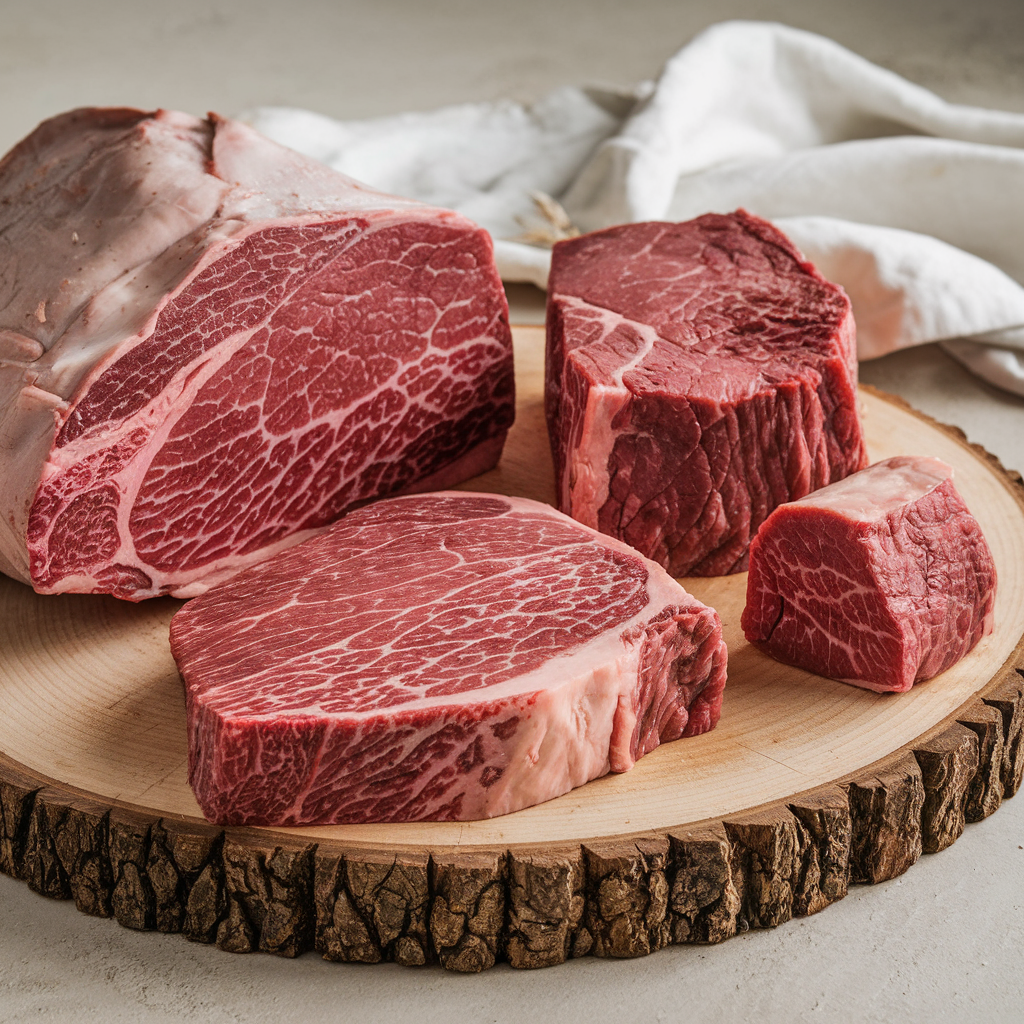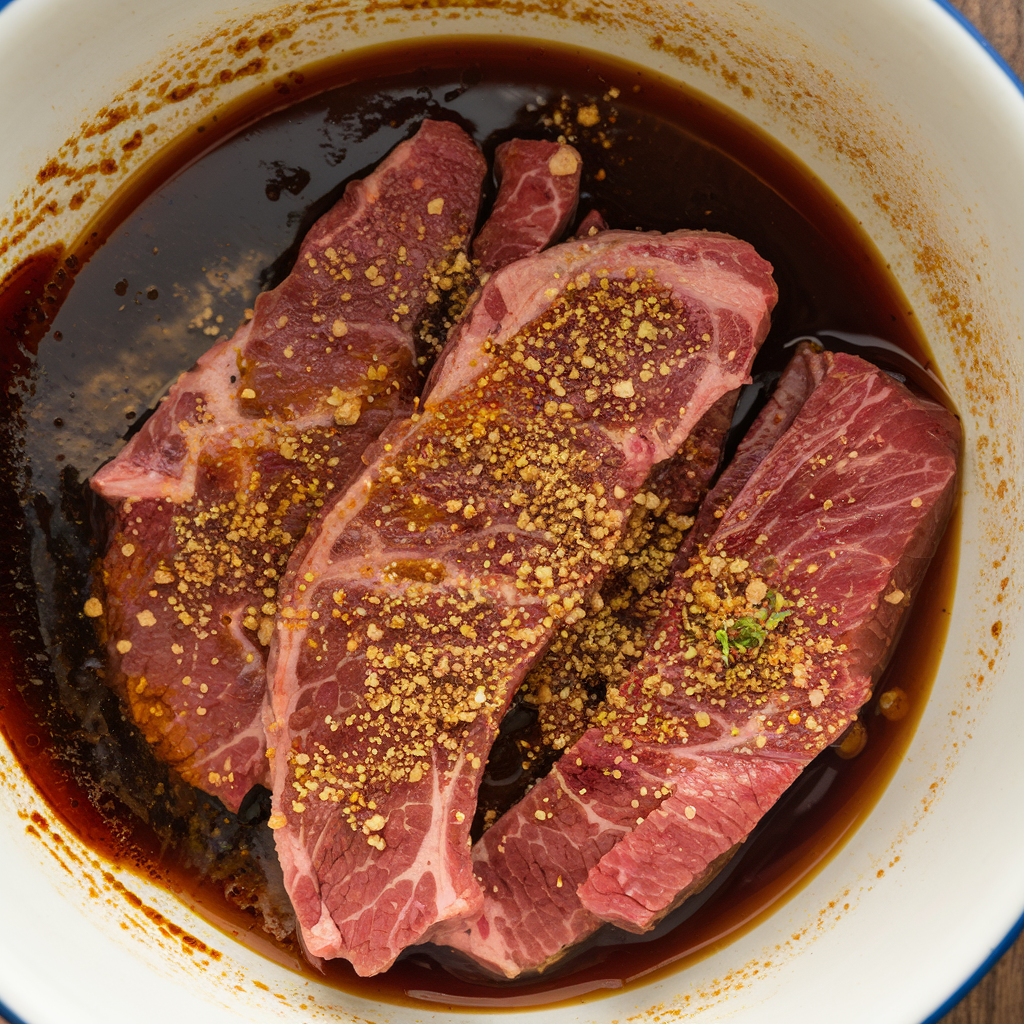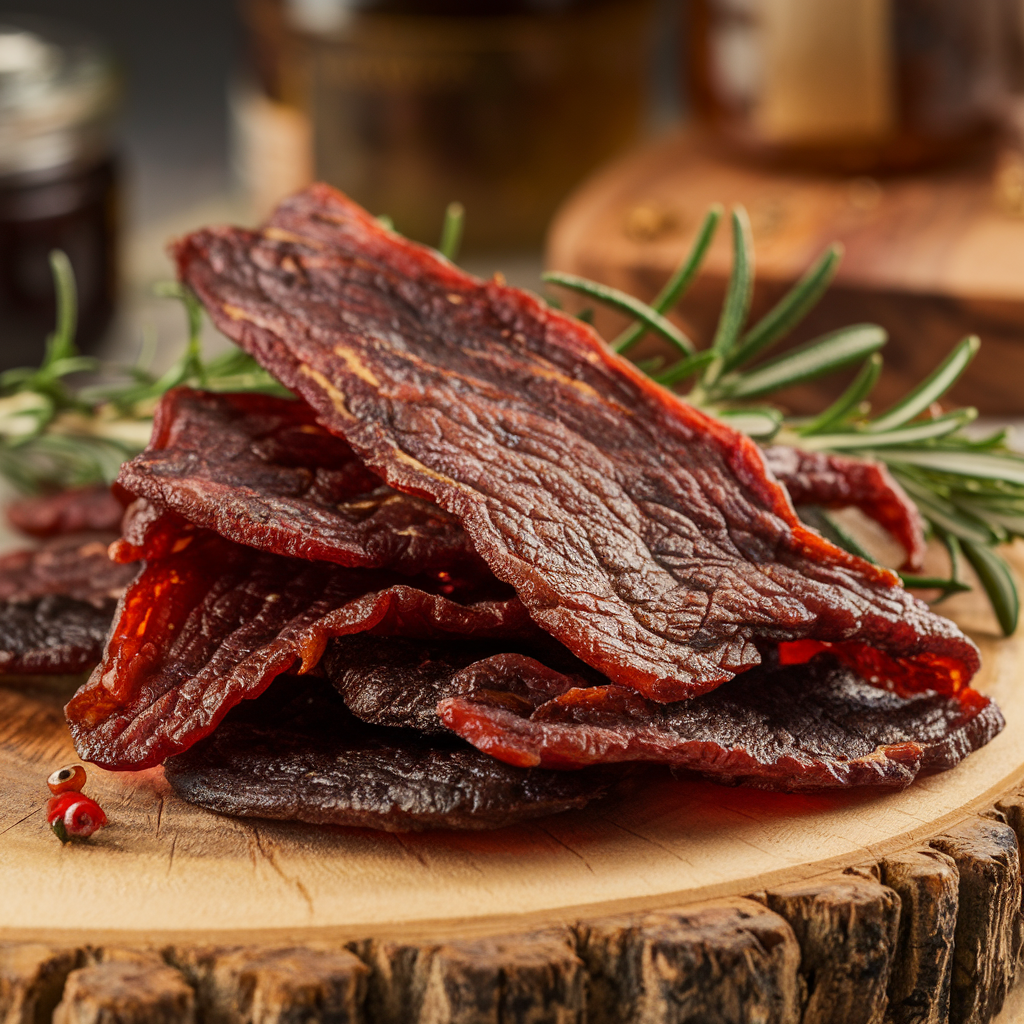Table of contents
Introduction
Beef jerky is a beloved snack known for its savory taste, chewy texture, and long shelf life. Whether enjoyed during outdoor adventures, as a protein-packed snack, or just for its delightful flavor, beef jerky has become a popular choice for many. One of the most critical aspects of making high-quality beef jerky is controlling the temperature during the drying process. The temperature not only affects the safety of the jerky but also its flavor, texture, and overall quality. In this article, we will explore the best temperature for making beef jerky, delve into the jerky-making process, and offer tips to ensure your jerky turns out perfectly every time.
Understanding the Jerky Making Process
Key Steps in Making Beef Jerky
Making beef jerky involves several key steps that are crucial for achieving the desired flavor and texture. Here’s an overview of the essential steps:

- Selecting the Right Cut of Beef: The first step in making beef jerky is choosing the right cut of meat. Lean cuts are preferred because they have less fat, which can spoil over time. Common choices include top round, bottom round, flank steak, and sirloin tip.
- Marinating the Meat for Enhanced Flavor: Marinating the beef is an important step to infuse it with flavor. A good marinade typically includes a combination of soy sauce, Worcestershire sauce, salt, pepper, garlic powder, onion powder, and other seasonings. Marinating for at least 4-6 hours, or overnight, ensures the flavors penetrate the meat thoroughly.
- Slicing the Beef to the Appropriate Thickness: The thickness of the meat slices affects both the drying time and the texture of the jerky. For best results, slice the beef into thin strips, about 1/4 inch thick. It’s easier to achieve uniform slices if the meat is partially frozen before cutting.

Methods of Making Beef Jerky
There are several methods for making beef jerky, each with its own set of advantages:
- Smoking: Smoking is a traditional method that imparts a rich, smoky flavor to the jerky. This method involves exposing the meat to smoke from burning wood at low temperatures for several hours.
- Dehydrating: Dehydrating is a popular method that involves using a dehydrator to remove moisture from the meat. This method is straightforward and produces consistently good results.
- Oven Drying: Oven drying is a convenient alternative for those who do not have a smoker or dehydrator. It involves drying the meat in an oven at a low temperature.
Importance of Temperature in Jerky Making
Role of Temperature in Drying Meat
The temperature at which beef jerky is dried plays a crucial role in determining the final quality of the product. Here’s how temperature impacts various aspects of the jerky-making process:
- Moisture Removal and Preservation: The primary goal of making beef jerky is to remove moisture from the meat to preserve it. Drying meat at the appropriate temperature ensures that moisture is effectively removed, which prevents bacterial growth and spoilage. A consistent and controlled temperature helps achieve the ideal moisture level for long-term preservation.
- Impact on Texture and Flavor: Temperature affects the texture and flavor of beef jerky. Low and slow drying processes generally result in a more tender and chewy texture, while higher temperatures can produce a firmer and drier jerky. Additionally, temperature influences the development of flavors, especially when smoking jerky. The right temperature helps retain the natural flavors of the meat while infusing it with the desired smoky or marinated taste.
- Safety Considerations: Ensuring the safety of beef jerky is paramount. Drying the meat at a sufficient temperature is essential to eliminate harmful bacteria and pathogens. The USDA recommends heating beef to an internal temperature of at least 160°F (71°C) before drying to ensure it is safe to eat. Maintaining the correct temperature throughout the drying process is crucial to produce safe and high-quality jerky.
Common Temperature Ranges
Understanding the common temperature ranges used in jerky making can help you choose the best approach for your needs:
- Low Temperature (130°F – 140°F or 54°C – 60°C): Drying beef jerky at low temperatures over a longer period can result in a tender and chewy texture. This range is often used in traditional methods, such as sun drying or cold smoking, where the emphasis is on gradual moisture removal and flavor development.
- Medium Temperature (140°F – 160°F or 60°C – 71°C): Medium temperatures strike a balance between moisture removal and drying time. This range is commonly used in dehydrators and oven drying methods. It provides consistent results and helps achieve the desired texture without compromising safety.
- High Temperature (160°F – 180°F or 71°C – 82°C): High temperatures can be used to shorten the drying time and ensure a quick moisture removal process. This range is suitable for hot smoking or high-temperature dehydrating. However, care must be taken to avoid over-drying the meat, which can result in a tough and brittle texture.
Optimal Temperature for Different Methods
Smoking Beef Jerky
Smoking beef jerky imparts a rich, smoky flavor that many people love. The optimal temperature for smoking beef jerky is crucial to ensure the meat is both safe to eat and delicious. Here’s what you need to know:
- Recommended Temperature Range: The ideal temperature for smoking beef jerky is between 160°F and 180°F (71°C and 82°C). This range helps to thoroughly cook the meat while infusing it with smoky flavors.
- How Temperature Affects the Smoking Process: Maintaining a consistent temperature within this range ensures that the beef jerky is dried evenly and safely. Lower temperatures may not effectively kill bacteria, while higher temperatures can over-dry the meat, resulting in a tough texture.
- Tips for Maintaining Consistent Temperature:
- Preheat the Smoker: Allow your smoker to preheat to the desired temperature before adding the meat. This helps maintain a stable temperature throughout the smoking process.
- Use a Thermometer: Invest in a reliable meat thermometer to monitor the internal temperature of the jerky. This ensures that the meat reaches the safe minimum internal temperature.
- Manage Airflow: Proper airflow is crucial for consistent smoking. Adjust the vents on your smoker to control the flow of air and maintain a steady temperature.
Dehydrating Beef Jerky
Dehydrating is a popular and straightforward method for making beef jerky. The optimal temperature for dehydrating beef jerky ensures effective moisture removal and a chewy texture:
- Recommended Temperature Range: The ideal temperature for dehydrating beef jerky is between 140°F and 160°F (60°C and 71°C). This range is effective for drying the meat thoroughly without cooking it too quickly.
- How Temperature Affects the Dehydrating Process: Dehydrating at the recommended temperature range allows the meat to dry evenly, retaining its flavor and texture. Lower temperatures may result in incomplete drying, while higher temperatures can cause the jerky to become too brittle.
- Tips for Achieving the Best Results:
- Preheat the Dehydrator: Preheating the dehydrator helps achieve an even drying process from the start.
- Arrange Meat Strips Properly: Place the meat strips in a single layer without overlapping to ensure consistent drying. Rotate the trays periodically if your dehydrator requires it.
- Monitor Drying Time: The drying time can vary depending on the thickness of the meat slices. Start checking for doneness after 4-6 hours and continue until the jerky reaches your desired texture.
Oven Drying Beef Jerky
Oven drying is a convenient method for making beef jerky at home without specialized equipment. The optimal temperature for oven drying ensures effective drying and flavor retention:
- Recommended Temperature Range: The ideal temperature for oven drying beef jerky is around 160°F (71°C). This temperature helps to dry the meat thoroughly while maintaining its flavor and texture.
- How Temperature Affects the Oven Drying Process: Drying beef jerky at the recommended temperature in the oven ensures even drying and reduces the risk of bacterial contamination. Lower temperatures may not dry the meat sufficiently, while higher temperatures can overcook it.
- Tips for Using an Oven:
- Use a Thermometer: Place an oven thermometer inside to monitor the temperature accurately, as oven settings can sometimes be inaccurate.
- Keep the Oven Door Slightly Open: Prop the oven door open slightly to allow moisture to escape and promote even drying. You can use a wooden spoon or a rolled-up piece of aluminum foil to keep the door ajar.
- Rotate the Racks: If you’re using multiple oven racks, rotate them periodically to ensure even drying.
Balancing Temperature and Time
Low and Slow Method
The low and slow method involves drying beef jerky at a lower temperature over an extended period. This technique is favored for its ability to produce tender and flavorful jerky. Here are the key points to consider:
- Benefits:
- Tender Texture: The slow drying process allows the meat to retain some of its natural moisture, resulting in a tender and chewy texture.
- Enhanced Flavor: Marinating the meat and then drying it slowly helps to intensify the flavors, making the jerky more flavorful.
- Reduced Risk of Over-Drying: Lower temperatures decrease the risk of over-drying the meat, which can make it tough and brittle.
- Ideal Temperature and Time Combination:
- Temperature: Aim for a temperature range of 130°F to 140°F (54°C to 60°C).
- Time: Drying time can vary depending on the thickness of the meat slices and the specific drying method used. Generally, it takes 8 to 12 hours for the jerky to reach the desired consistency.
- Tips for Success:
- Monitor Consistently: Regularly check the internal temperature of the meat to ensure it stays within the ideal range.
- Rotate Trays: If using a dehydrator or oven, rotate the trays periodically to promote even drying.
- Test for Doneness: The jerky should be firm and slightly pliable, with no visible moisture when bent.
High and Fast Method
The high and fast method involves drying beef jerky at a higher temperature for a shorter period. This technique is suitable for those who want to expedite the jerky-making process. Here are the key points to consider:
- Benefits:
- Quicker Drying Time: Higher temperatures speed up the drying process, allowing you to make jerky in less time.
- Efficient Moisture Removal: The high temperature ensures rapid moisture removal, which helps to preserve the jerky effectively.
- Crispier Texture: This method can produce a firmer and crisper texture, which some people prefer.
- Ideal Temperature and Time Combination:
- Temperature: Aim for a temperature range of 160°F to 180°F (71°C to 82°C).
- Time: Drying time can range from 4 to 6 hours, depending on the thickness of the meat slices and the specific drying method used.
- Tips for Success:
- Preheat Equipment: Preheat your smoker, dehydrator, or oven to the desired temperature before adding the meat.
- Check Frequently: Regularly monitor the drying process to avoid over-drying and ensure the jerky reaches the desired texture.
- Cool Before Storing: Allow the jerky to cool completely before storing it in airtight containers to prevent condensation and moisture buildup.
Balancing temperature and time is crucial for achieving the perfect beef jerky. Whether you prefer the low and slow method or the high and fast method, understanding the impact of temperature and drying time can help you make delicious and safe jerky.
Safety and Quality Considerations
Ensuring Safe Jerky
Producing safe beef jerky involves several key steps to ensure that the meat is free from harmful bacteria and safe to consume. Here’s what you need to keep in mind:
- Internal Temperature for Safe Consumption: According to the USDA, beef should reach an internal temperature of at least 160°F (71°C) to ensure that any harmful bacteria are killed. It’s important to heat the meat to this temperature before the drying process begins.
- Using a Food Thermometer: A reliable food thermometer is essential for checking the internal temperature of the meat. Insert the thermometer into the thickest part of the meat to get an accurate reading. Make sure that the thermometer is calibrated correctly for accurate measurements.
- Importance of Storing Jerky Properly After Preparation: Once your jerky is prepared, it’s crucial to store it properly to maintain its safety and quality. Store the jerky in airtight containers or vacuum-sealed bags to prevent exposure to air and moisture. Keep the jerky in a cool, dry place, and for longer storage, refrigerate or freeze it.
Maintaining Quality
Ensuring the quality of your beef jerky is just as important as its safety. Here are some tips to maintain the best quality:
- How Temperature Impacts Jerky Texture and Flavor: The drying temperature affects the texture and flavor of beef jerky. Proper temperature control helps achieve the desired chewiness and flavor intensity. Higher temperatures can lead to over-drying, while lower temperatures may result in under-drying.
- Avoiding Over-Drying or Under-Drying the Meat: Monitor the drying process closely to avoid over-drying, which can make the jerky tough and brittle, and under-drying, which can leave the jerky too moist and prone to spoilage. Aim for a firm but pliable texture that bends without breaking.
- Tips for Achieving Consistent Results: Consistency is key to making high-quality beef jerky. Here are some tips:
- Use Uniform Slices: Slice the meat evenly to ensure consistent drying. Thicker slices will take longer to dry, while thinner slices will dry faster.
- Rotate Trays or Racks: If you’re using a dehydrator or oven, rotate the trays or racks periodically to ensure even drying.
- Check for Doneness: Regularly check the jerky for doneness. It should be dry to the touch, firm, and slightly pliable when bent.
Conclusion
Making beef jerky is a rewarding process that results in a tasty and nutritious snack. Understanding the importance of temperature, the different methods, and the safety considerations can help you produce high-quality jerky every time. Whether you prefer the rich flavor of smoked jerky, the convenience of dehydrating, or the accessibility of oven drying, the key is to balance temperature and time to achieve the best results. Experiment with different methods and find what works best for you.
I hope this guide has been helpful and informative. If you have any more questions or need further assistance, feel free to ask. Happy jerky making! 😊

